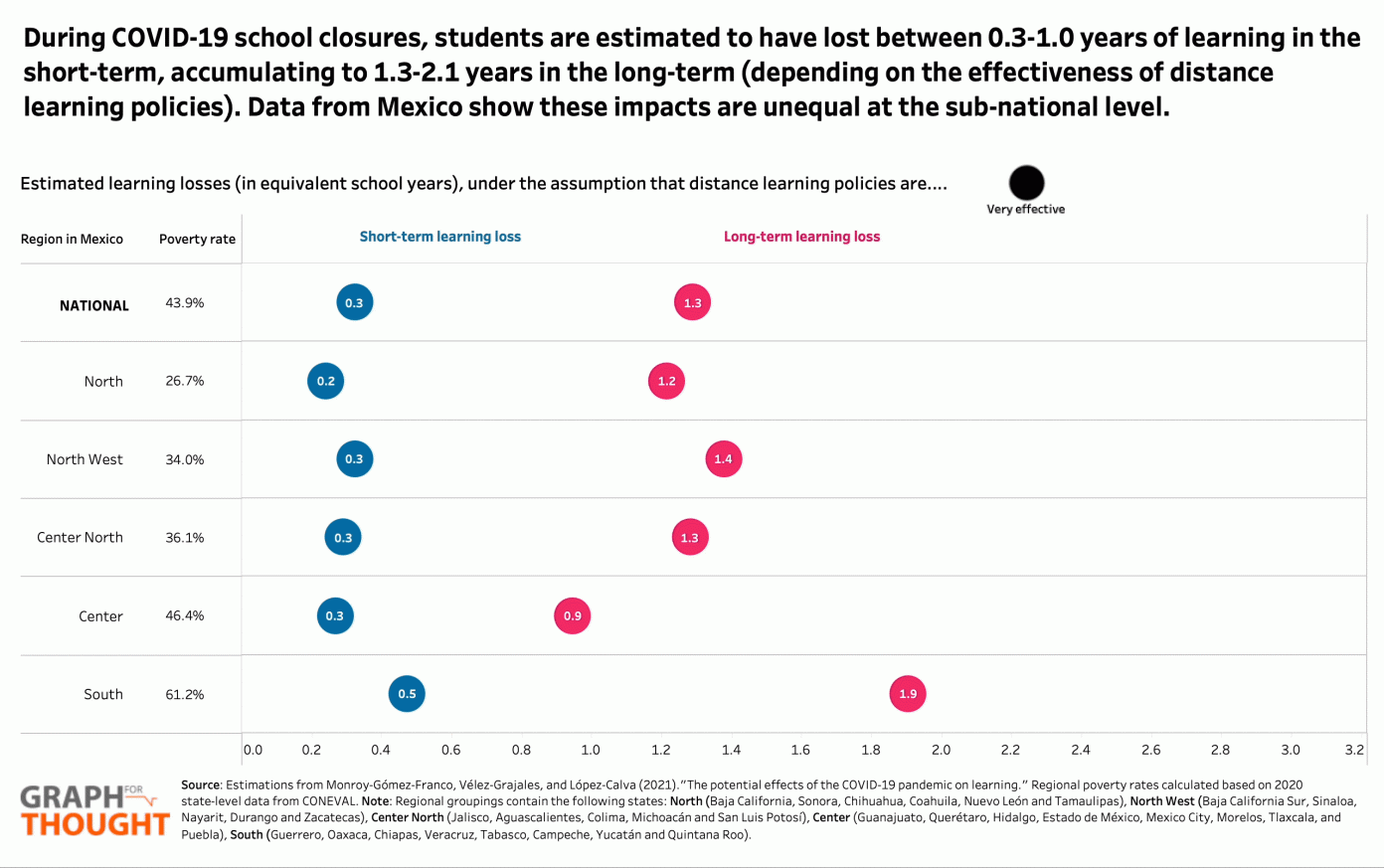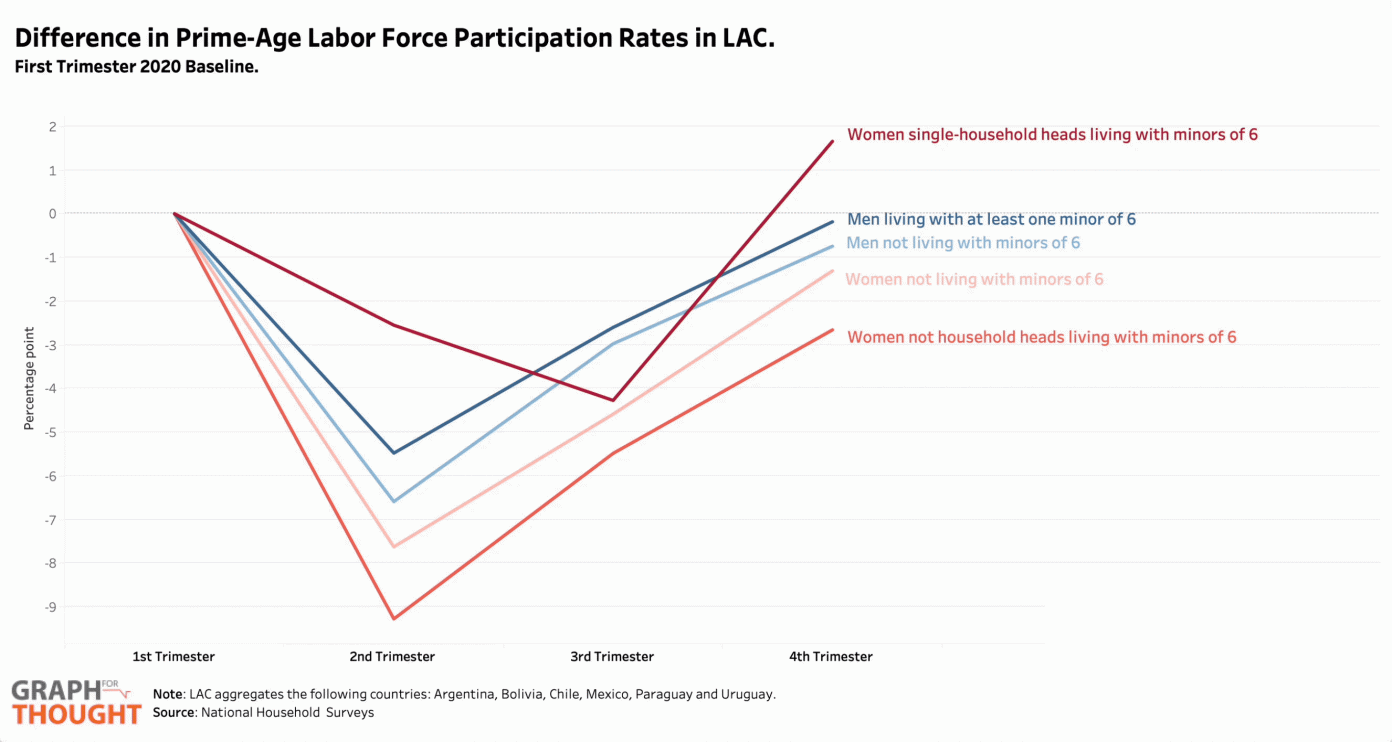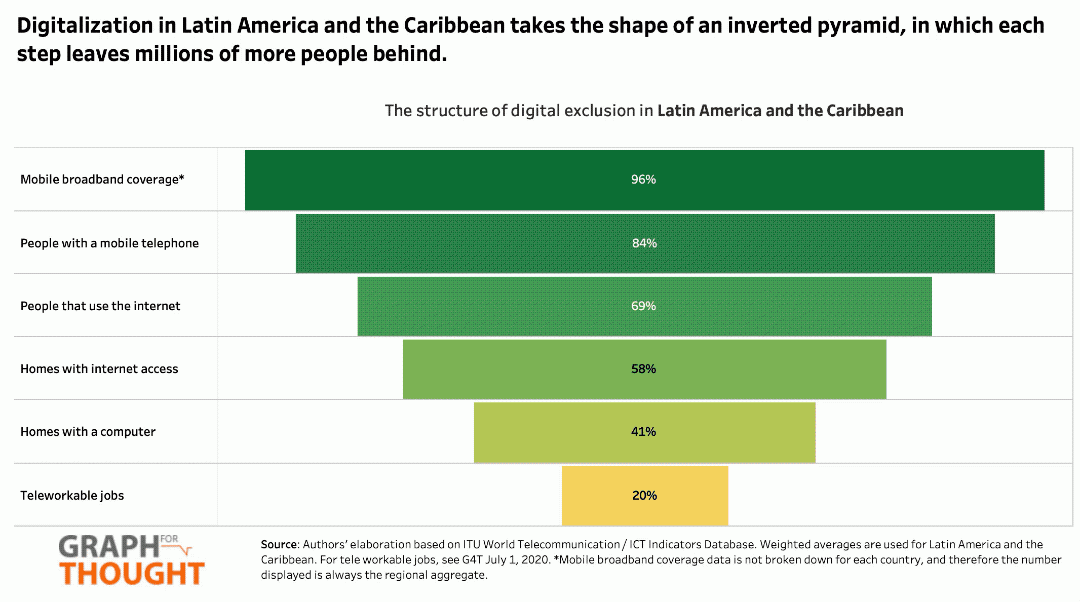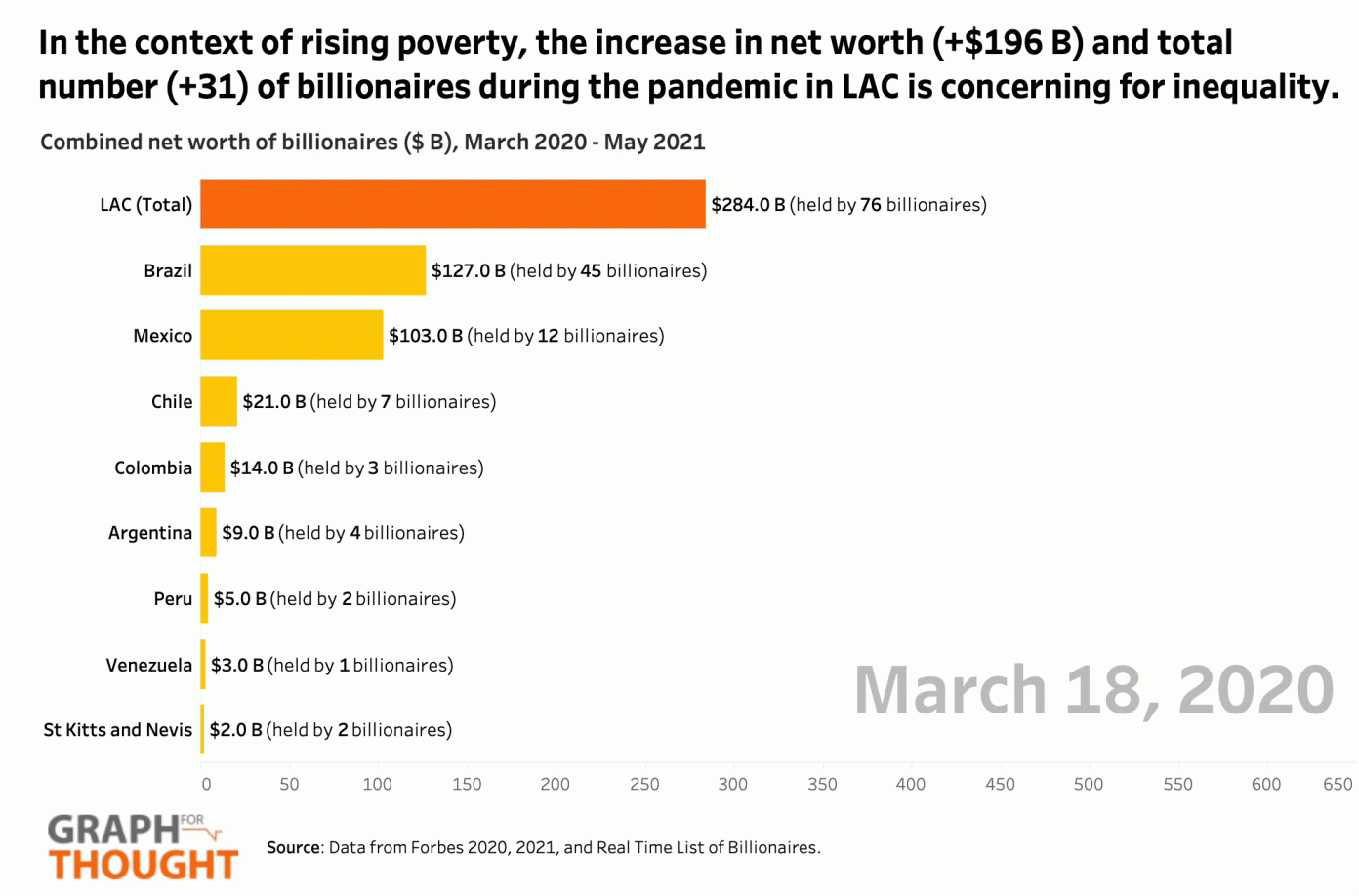Learning from the recent past to build forward: Five COVID-19 lessons for recovery
December 31, 2021
The year 2021 has been another difficult year as the pandemic raged on and people across LAC confronted associated challenges such as uneven recovery, poverty, food insecurity, and, mainly, the loss of loved ones. However, it has not been a year without reasons for optimism. For example, despite a delayed start, vaccination efforts in the region have seen remarkable (though uneven) progress. Moreover, even in this challenging context we have seen democratic institutions upheld, as citizens across the region elected new leaders to government in credible, widely accepted elections (with few exceptions). As we look to the future, however, we find ourselves facing heightened levels of uncertainty. COVID-19 has lasted longer than many of us ever anticipated, and it has wrought greater damage than many of us ever imagined; and, unfortunately, it is still far from over. The new omicron variant has triggered a new wave of contagion, being just one more example of this.
However, we face this uncertainty armed with impressive amounts of information. Scientists, researchers, and governments around the world have been collecting and sharing an incredible volume of data and knowledge in almost real-time. This includes, for example, data on COVID-19 cases and deaths, virus genome sequences, population mobility patterns, and government responses. According to the Dimensions database, over 750,000 academic publications have been published to date on COVID-19. While we still do not know many of the ways in which COVID-19 will impact our health, our economies, and our societies in the long-term—we are learning at an astonishing pace.
At the end of 2020, I published a #GraphForThought with 5 updated charts, looking back on several posts from the year and reflecting on how rapidly our knowledge about COVID-19 and its consequences had changed – including the improving quality of mortality data, the waning effectiveness of stay-at-home orders, the accumulating loss of in-person schooling, gender differences in employment recovery, and the sustainability of emergency social assistance spending.
As 2021 draws to a close, we have learned even more. In this post, I revisit 5 #GraphForThought entries from this year which jointly remind us of the enormity and urgency of the challenge we are facing in the years to come. I reflect on what we can learn from them as we think about recovery—in particular, in relation to the need to act swiftly and boldly if we are to mitigate the risk of further deepening structural inequalities in the long-term.
1. Targeted strategies to compensate for big and unequal learning losses among students, particularly the youngest ones
In this #GraphForThought from November, I showed that while schools have begun to reopen in many countries across the LAC region, the education crisis induced by COVID-19 is far from over. Compared to other world regions, LAC has faced some of the longest durations of school closures during the pandemic—remaining fully or partially closed for an average of 48 weeks. As in-person schools remained shut, children had to learn from home through distance-learning platforms with potentially large consequences for learning outcomes (while potentially concurrently facing a range of other serious challenges such as limited access to adequate nutrition, deteriorating mental health, and/or the loss of a parent or caregiver). While data on actual learning losses is still scarce, available data suggests that these losses are both very large and very unequal. Notably, learning losses do not only affect students in the short-term (given students’ direct loss of schooling) but also in the long-term (given the cumulative effects of this loss over time). Data from Mexico estimates that in the short-term students lost between 0.3-1.0 years of learning, and in the long-term they lost between 1.3-2.1 years. Moreover, data at the sub-national level suggests that students in the South (which is the poorest region in the country) face far worse learning losses than students in other regions. To recover from the individual and social loss due to COVID-19 school closures, our region needs decisive compensatory action, investment, and targeted strategies to prevent long term regressive impacts.

2. Gender-sensitive policies to support women’s labor force participation and employment for an inclusive, productive recovery
In this #GraphForThought from August, I showed how COVID-19 is risking much of the progress that LAC has made in recent decades in terms of gender equity within the labor market. Indeed, studies estimate that the pandemic could set back female labor force participation in LAC by approximately ten years. This effect is taking place through multiple channels including women’s overrepresentation in the economic sectors most negatively impacted by the crisis as well as traditional gender norms around domestic work and caregiving activities that have placed additional burdens on women during this time. Notably, these gendered impacts differ depending on household composition—for example, whether or not women have young children; and if they do, whether or not they are the household head. Household survey data for 6 countries in the region suggests an interesting divergence between mothers of young children who are the household head (i.e. single mothers) and mothers who are not the household head (i.e. mothers in multi-parent households), with the former seeing faster labor market recovery rates. While there are likely many reasons for this, one explanation could be that mothers who are the household head did not have the option of not working (as they may be the only income generators in their households), whereas mothers who are not the household head may have left the labor market to take over caregiving duties (if their income was "complementary" to that earned by the household head). The disproportionate impact of the crisis on women’s labor market outcomes demands that policy responses take a gender-sensitive approach. Importantly this means not only addressing policies in the labor market but also investing in associated policies and infrastructures that address barriers such as access to childcare/eldercare and social norms surrounding the distribution of labor within the household.

3. Truly inclusive digital strategies: Investments in infrastructure, skills, and new regulation for inclusive digitalization
In this #GraphForThought from March, I showed how the structure of digital exclusion in LAC adversely impacted the lives of millions during COVID-19 lockdowns. In the context of the pandemic, access to digital technologies became one of the most important determinants of people's well-being. Having access to the internet has been (and continues to be) an essential lifeline for many, since it allowed people to continue performing essential activities such as working, studying, socializing, or banking while staying at home. Despite important advances in expanding broadband coverage and increasing the ubiquity of mobile phone ownership in LAC, the effective conversion of these digital advances into well-being improvements remains out of reach for the vast majority of the population. For example, even if a person’s geographic location is covered by broadband services and they own a mobile phone, they may not be able to afford the subscription to access those services—not to mention costlier options such as home internet connections or digital devices such as computers. Data suggests that digitalization in the region takes the form of an “inverted pyramid”—where, at each step, millions more are left behind. For example, while 96% of the population lives in an area with mobile broadband coverage, just 41% owns a computer. Even fewer, 20%, have the opportunity to use those services and tools to earn an income by working remotely. During the pandemic, both public and private sector actors have invested in improving digital connectivity in the region, especially for lower-middle-income populations. However, if efforts are to be successful in enabling inclusive digitalization the long-term, three factors are essential: we need to invest in the infrastructure required to connect people; we have to invest in skills for people to be able to leverage digital technologies; and we need to support governments enact regulation that prevent all efficiency gains to go to rent.

4. Rethinking the progressivity and efficiency of fiscal systems to combat the pandemic’s regressive impacts
In this #GraphForThought from May, I showed how the uneven capacity of people to cope with shocks has implications for rising inequalities in the context of COVID-19. Indeed, dealing with a shock such as the pandemic can be expensive, and wealthier people tend to be able to cope much better. While the pandemic has pushed an estimated additional 22 million more people into poverty in the region as they lost various sources of income, some of the region’s richest individuals saw their wealth increase greatly as they earned growing returns on capital markets. While data on how the richest have fared during this time is scarce, the Forbes World’s Billionaires List provides one useful (if very imperfect) glimpse. According to this data, between March 2020 and May 2021, the total number of billionaires in LAC increased by 31 and their combined net worth increased by $196 billion (roughly the size of Ecuador’s economy). That reflects an increase of around 40 percent in their stock of wealth. In the context of constrained fiscal space and a growing need for increased social spending to recover from the pandemic and its many regressive impacts, there has been a resurgent debate on taxation in the region and who should bear what share of that burden. In LAC—the second most unequal region in the world—taxing the richest could provide some of necessary resources to promote widespread social and economic gains (this does not necessarily include taxing wealth, but the return to that wealth). Under the right circumstances, this could have positive impacts on both equity and efficiency outcomes.

5. Boosting the resilient recovery of productive Small and Medium Enterprises to generate employment and fuel growth
In this #GraphForThought from April, I showed how negative economic impacts of COVID-19 on businesses disproportionately hurt small and medium sized enterprises (SMEs). This is critical for a region like LAC, where SMEs are a primary source of employment and key supplier of goods and services to a large share of the population. For example, estimates suggest that in LAC SMEs comprise as much as 99.5% of all businesses in the region, 60% of the employed population, and 25% of GDP. While data on the impact of the pandemic on firms is still scarce, COVID-19 “follow-up” surveys conducted by the World Bank’s Enterprise Surveys team in four Central American countries paint an early (if incomplete) picture of the situation. As the graph illustrates—at the aggregate level, firms of all sizes have been negatively affected by the pandemic in all countries. However, SMEs (shown in light blue)—and in particular, small enterprises—have seen larger sustained drops in sales as well as faced higher rates of permanent closures than large firms. As a critical source of employment and a lifeline of economic prosperity for so many communities across the region, it is essential that we work to support SMEs on the path to recovery. This requires investments in both resilience and productivity. If countries were to act now to address some of the structural barriers that SMEs face, such as access to finance, investments in digitalization and innovation, regulatory burdens, or broader challenges in the enabling environment—SME growth could become a strong engine of sustained economic recovery in the region.


 Locations
Locations